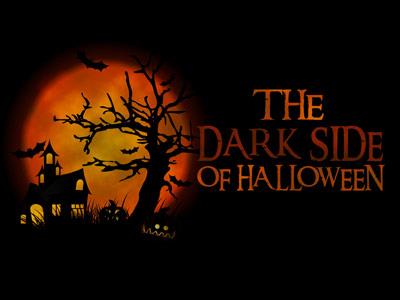-
Halloween - Understanding It's Origins And Practices
Contributed by Cris Willis on Dec 27, 2007 (message contributor)
Summary: The festivities on Halloween were once the Christian’s way of laughing at death and evil, something we can do in certain hope of Christ’s victory over the powers of darkness. The opportunity for the Christian Church lies in how we treat the holiday “Hallo
“Understanding the History and Practice of Halloween”
Text: II Corinthians 6:11-18; Ephesians 5:3-16
Introduction: Since the eighth century Christians have celebrated All Saints’ Day on November 1 to celebrate the known and unknown Christian Saints. Saints are not just those whom the Church has canonized, but all members of that "cloud of witnesses" who proclaim Jesus as Lord - including you and me!
Almost as old as the celebration of All Saints’ Day is the tradition associated with All Hallow’s Eve. ("Hallows" mean "saints," both mean "holy ones." As in "Hallowed be thy name.") So, Halloween means "the evening before All Holy Ones’ Day." Today we call that festival Halloween and we have many secular ways of recognizing it.
People of many races and cultures have remembered their dead and have had superstitions about death itself. Christians remembered death itself on All Hallow’s Eve and celebrated Christ’s victory over death. During the Middle Ages, Christians would gather in Churches for worship and they would remember the saints’ victories over evil.
Thus, the festivities on All Hallow’s Eve was the Christian’s way of laughing at death and evil, something we can do in certain hope of Christ’s victory over the powers of darkness. The opportunity for the Christian Church lies in how we treat the holiday “Halloween” as an evil celebration or glorification or a chance for us to witness of the power of Christ over death and that we offer hope to all who believe in Christ that there is life beyond the grave.
Although we cannot celebrate Halloween with it’s many pagan and overt occultic overtones, we can celebrate the love of Christ for all people and His desire for them to know and experience His victory over death, and once again we can restore our celebration of this day as a renewal of our faith in the hope of eternal life.
I. The History of Halloween
A. The Early Christian Origin of Halloween or All Saints Day
1. In the early years of Christianity, when Rome persecuted Christians, so many martyrs died for the faith that the Church set aside special days to honor them.
2. In 607 Emperor Phocas presented to the Pope the beautiful Pantheon temple in Rome. Originally built in 27 BC by Agrippa in honor of Augustus’ victory at Actium and dedicated to Jupiter and the planetary divinities, the Pantheon was one of the few remaining old heathen temples.
3. Pope Boniface IV quickly removed the statues of Jupiter and the pagan gods and consecrated the Pantheon to "all saints" who had died from Roman persecutions in the first three hundred years after Christ.
4. During the dedication on May 13 in the year 609 or 610, a procession of twenty-eight carriages brought the bones of martyrs from the various cemeteries to the church.
5. In following years, a festival of All Hallows or All Saints Day honoring all martyrs spread throughout the western part of the Roman Empire.
6. In the eighth century Pope Gregory II moved the church festival of All Saints to November 1st.
7. The move to November 1st in part offered a substitute for the popular pagan celebration of the Celtic New Year, which honored both the Sun god and Samhain, Lord of the Dead.
8. Pope Gregory the Great (540-604) moved to restrict such pagan practices and told the people that "They are no longer to sacrifice beasts to the Devil, but they may kill them for food to the praise of God, and give thanks to the giver of all gifts for His bounty."
9. Many, however, held on to pagan beliefs along with Christianity. Sometimes these ancient pagan gods were transformed into Christian saints, angels, and heroes. Scriptures were often allegorized by these pseudo (false) Christians to allow for many of these beliefs.
10. Even into the eleventh century, many pagan beliefs were accepted by Christians--beliefs such as the fear of Fate, the use of medicinal herbs with incantations, sacrifices at springs and crossroads to the spirits of the place (still observable in Mexico, for example), and the night flight or Wild Ride of the spirits, led by Diana.
11. The devil became absorbed into the magical world of fairies, goblins, dwarfs and imps. Demons were said to appear in animal forms. Such beliefs, of course, diverged markedly from the Scriptural account of the devil and his demons as cosmic personalities conquered by Christ on the cross.
12. In the tenth century, Abbot Odilo of Cluny began celebrating the November 2nd following "All Saints’ Day" as "All Souls’ Day" to honor not just the martyrs, but all Christians who had died. People prayed for the dead, and many other superstitions continued.
13. Food was offered to the dead, and it was often believed that on these two festivals souls in purgatory would take the form of witches, toads or demons and haunt people who wronged them during their lifetimes.

 Sermon Central
Sermon Central



